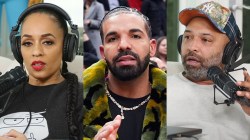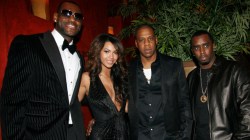It
started out simple enough. Film studios and movie makers started to pepper
their soundtracks with hip hop or rap tunes here and there. Soon more and more
songs began to appear on film soundtracks and trailers eventually leading to
most of the films non instrumental score being dominated by hip hop music. As
the music became more dynamic elements of the film, movies started featuring
hip hop stars trying their acting chops. Once films like New Jack
City (Ice T), Boyz n the Hood (Ice Cube)
and Juice (Tupac Shakur) hit it big the floodgates were opened suddenly creating
a new genre of films almost entirely created around hip hop and rap.
In
as little as 10 years films featuring hip hop stars and music became top
grossing movies creating a format that has now become commonplace in Hollywood.
Take for example 2002’s Exit Wounds
starring DMX and Steven Sigal. That film grossed $52
million domestically. (The
hip-hop economy: part 2 of a series – Industry Overview Black Enterprise, July, 2002 by Sakina P. Spruell).
Thank You Krush Groove
Flashback to 1985 and the low budget film Krush Groove and you’ll see the early
beginnings of how this genre of hip hop films began. At that time these films
were in essence a new way to promote new artists — for that film LL Cool J and Run DMC — and to further popularize the burgeoning sound that
would eventually become a billion dollar industry. After a series of less memorable
films like Beat Street, Breakin and the Disorderlies,
the 90’s suddenly introduced moviegoers to the aforementioned films and
directors who wanted to do more than put rappers and hip hop artists in movies.
Movie makers like John Singleton, Spike
Lee and the Hughes Brothers
tapped into the raw and explosive talent some of these artists had outside the
studio and suddenly a whole new crop of movie stars who would become as visible
on the silver screen as they were audible on the radio and on their records.

AD LOADING...
The Silver Screen’s Undiscovered Gold Mine
Thanks to the critically acclaimed and
commercial success of movies like Boyz in
the Hood Hollywood
soon discovered untapped profitability this genre. Rather than just plunking
some big named hip hop star or rapper into a plot there were opportunities to
create entire stories about the life and culture that had already made the
music so successful. On the one hand, it created opportunities for talented
artists like Will Smith, Ice Cube
and Tupac Shakur to show off their
versatility. On the other hand it also this world and this culture to a whole
new audience that had never had such a clear glimpse of this universe. While
sometimes unpleasant and uncomfortable, the gritty nature and subject matter of
some of these films like Menace to
Society offered a truer perspective of the African American community that
many movie goers thought to be glorified or exaggerated in the songs and
posturing of some of the artists. Ultimately, this new brand of film and new generation
of filmmakers found success not just in the black community but across all
racial divides and found a new way to express their art in a bolder, bigger
format.
Not just a genre but an award winning genre
The
same year that saw DMX in a starring
role,
and nabbed an Academy Award for best song (Lose
Yourself). Bringing home the point
even stronger at the 2006 Oscars, rapper Ludacris
was part of the ensemble cast of the film Crash,
which won best picture. Additionally, actor Terrence Howard was nominated for best actor in the hip hop film Hustle & Flow which also featured
the oscar-winning song It’s Hard out Here for a Pimp by Three 6 Mafia. The industry has spoken; hip hop
and rap are now a viable film genre that is no longer just a vehicle to help
artists sell records but have just as much value and meaning as any other film
out there.



